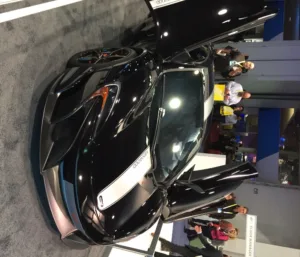Yes, CES has been over for almost a week already and I am still suffering from the content overload that CES creates in almost every tech writer on the planet. We each have our areas of interest and area we have to cover and when running around on the show floor it makes for some serious exercise.

In total, I walked over 26 miles in those days, courtesy of my smartphone that keeps track of these things. In other words I do feel like the marathon man after the show closes its doors.
As we know from CES announcements, the total number of visitors was somewhere in the 175,000 range, a very similar number to last year. So no growth anymore? As it appears Las Vegas is running out of everything, from hotel rooms to transportation space and flights in and out of the city. If the number of visitors cannot be increased any more, what are we doing with more and more exhibition space, if the number of people visiting does not increase? By the way, everyone who visited the Sands Convention Center, and especially the area with the startups, will have a tough time believing that there were not more than 175,000 just in that space alone.
So what is the the take away from CES? As my colleague Steve Sechrist already discussed earlier this week, there were many new products and technologies demonstrated during the show. Many of those were certainly just improved versions of earlier models, but many showed what better technology can achieve. 3D and TV is one of those areas.
For me there were two takeaways from CES this year.
Number one was the fact that a car can sell everything, even cables. If you put your cables into a nice car, you must have the best cables around. This concept was demonstrated on the Monster booth, priding themselves on offering the best cables in the world. Even if this is so, I wonder what was accomplished by showing a Bentley convertible that, apparently, had those cables installed; it’s not as though anyone was allowed close enough to the car to observe this first hand, anyway. To be clear, I like the Bentley, but since you couldn’t sign up for a “give away” of the car, my interest was somewhat limited.
Then there was the high end performance car, the McLaren on the JVC Kenwood booth. While I kind of understand the reasoning, JVC Kenwood was using the McLaren as a protoype. It seems to be somewhat excessive to demonstrate an idea of the future of car instrumentation (I just say HUD here) in a car like the McLaren and change the whole dashboard just for demonstration purposes only. (We saw a similar demonstration, in a different McClaren, at IFA: JVC Steals Show With Automotive Entry – TA).
Anyway, I think any kind of consumer electronics sells better when a sports car takes up 25% of the booth space. It also opens up a new venue for the CES: what about Detroit for the next show?
The other topic that came out of CES 2016 was the over-abundance of AR/VR devices. While many analysts, including yours truly, see this year as the beginning of the VR invasion, at least in the eyes of the supplying companies, as VR has already arrived in Shenzen. As a little prediction for CES 2017, the VR headset from China will have the same importance as the oversupply of micro projectors in every booth that carries the name Shenzen. I can tell you there were a lot of those in every exhibition hall.
So if VR headsets will be readily available, what will differentiate them? I believe that hardware execution and content availability will be the main differentiator in the coming year.
So how can we make CES into CES again? I vote for a split of the show into a mobile device event that includes the car part and the rest of the show will make for something that I can vaguely remember as being fun to attend. Anyone second my suggestion? Norbert Hildebrand

